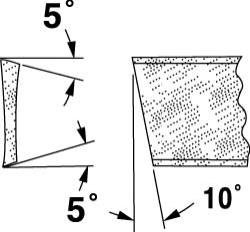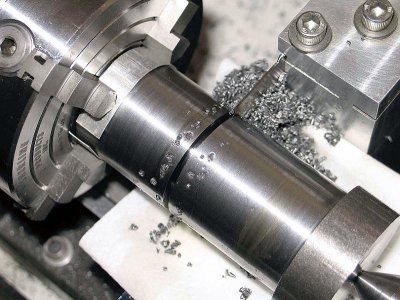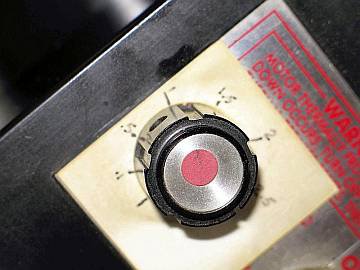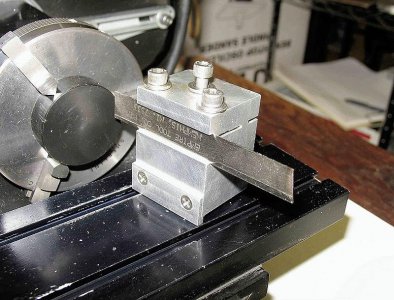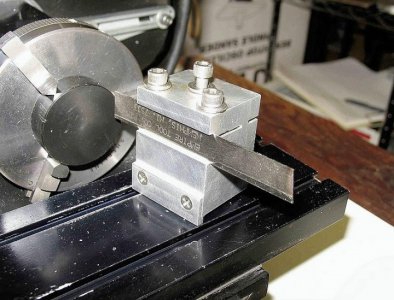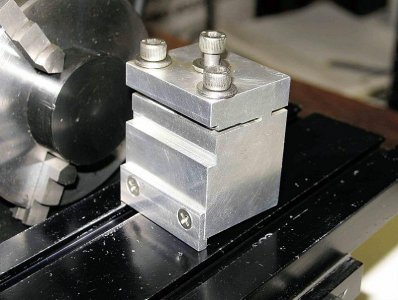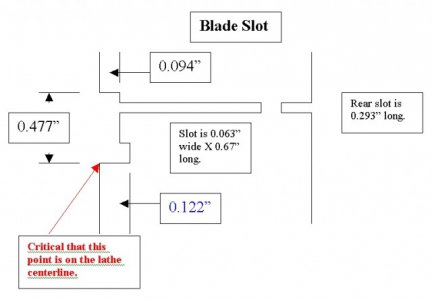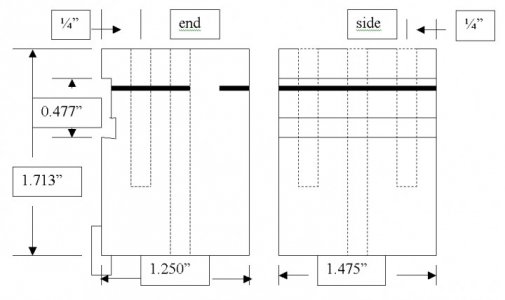-
Welcome back Guest! Did you know you can mentor other members here at H-M? If not, please check out our Relaunch of Hobby Machinist Mentoring Program!
You are using an out of date browser. It may not display this or other websites correctly.
You should upgrade or use an alternative browser.
You should upgrade or use an alternative browser.
Lathe rear parting tool
- Thread starter Pescadora
- Start date
- Joined
- Mar 3, 2020
- Messages
- 506
I’ve been trying to come up with an idea for making one for my SB9.
Been thinking for years, & nothing’s happening.
But…I just remembered, I have this table I made years ago before I bought a mill.
it’s 4”x 8”x 5/8”, with a spigot on the bottom so it will bolt to the cross slide with the compound off. It’s as accurate as i could make it.
Thanks to you guys, I will now make one, roughly adapt those plans, bolt it to the table & Bob’s yer Uncle.
Cheers
Been thinking for years, & nothing’s happening.
But…I just remembered, I have this table I made years ago before I bought a mill.
it’s 4”x 8”x 5/8”, with a spigot on the bottom so it will bolt to the cross slide with the compound off. It’s as accurate as i could make it.
Thanks to you guys, I will now make one, roughly adapt those plans, bolt it to the table & Bob’s yer Uncle.
Cheers
Attachments
- Joined
- Sep 21, 2021
- Messages
- 108
Someone help me out here as a beginner - I can't get my head around why a rear mounted parting tool makes a difference??
Every connection between parts from the Ways on the lathe bed up to the tip of the parting tool can have some sort of flexibility or movement. On their own, they are small or possibly unmeasurable. Add them all together and all sorts of strange things can happen.
Making a solid connection with no adjustment, (center height is guaranteed) removes all the other parts and their connections, lubrication and things from the equation. many problems go away and you likely will have a larger operating envelope in some other areas for parting.. more materials, bigger/smaller diameters..
on a machine tool, stiffness and rigidity is everything.
Making a solid connection with no adjustment, (center height is guaranteed) removes all the other parts and their connections, lubrication and things from the equation. many problems go away and you likely will have a larger operating envelope in some other areas for parting.. more materials, bigger/smaller diameters..
on a machine tool, stiffness and rigidity is everything.
- Joined
- Dec 20, 2012
- Messages
- 9,422
Someone help me out here as a beginner - I can't get my head around why a rear mounted parting tool makes a difference??
Have a look here. It might answer some of your questions.
- Joined
- Mar 21, 2018
- Messages
- 1,608
It is clear to me now that all the problems with parting stem from the flexibility in the tower of moving parts that held the tool. Take most of them out of the equation and the difference is profound.
Yeah, but this method takes none of them out. The cutting forces with this contraption is UP, away from the ways - and the apron isn't tightly held down against up-lift, so rigidity isn't what this is giving you.
Also, this design is likely to give you fatigue cracks at the flexure point over time, faster for aluminum, slower for steel.
Yeah, but this method takes none of them out. The cutting forces with this contraption is UP, away from the ways - and the apron isn't tightly held down against up-lift, so rigidity isn't what this is giving you.
I yield to a superior opinion. I should not post on a forum where I know so little.Also, this design is likely to give you fatigue cracks at the flexure point over time, faster for aluminum, slower for steel.
Last edited:


